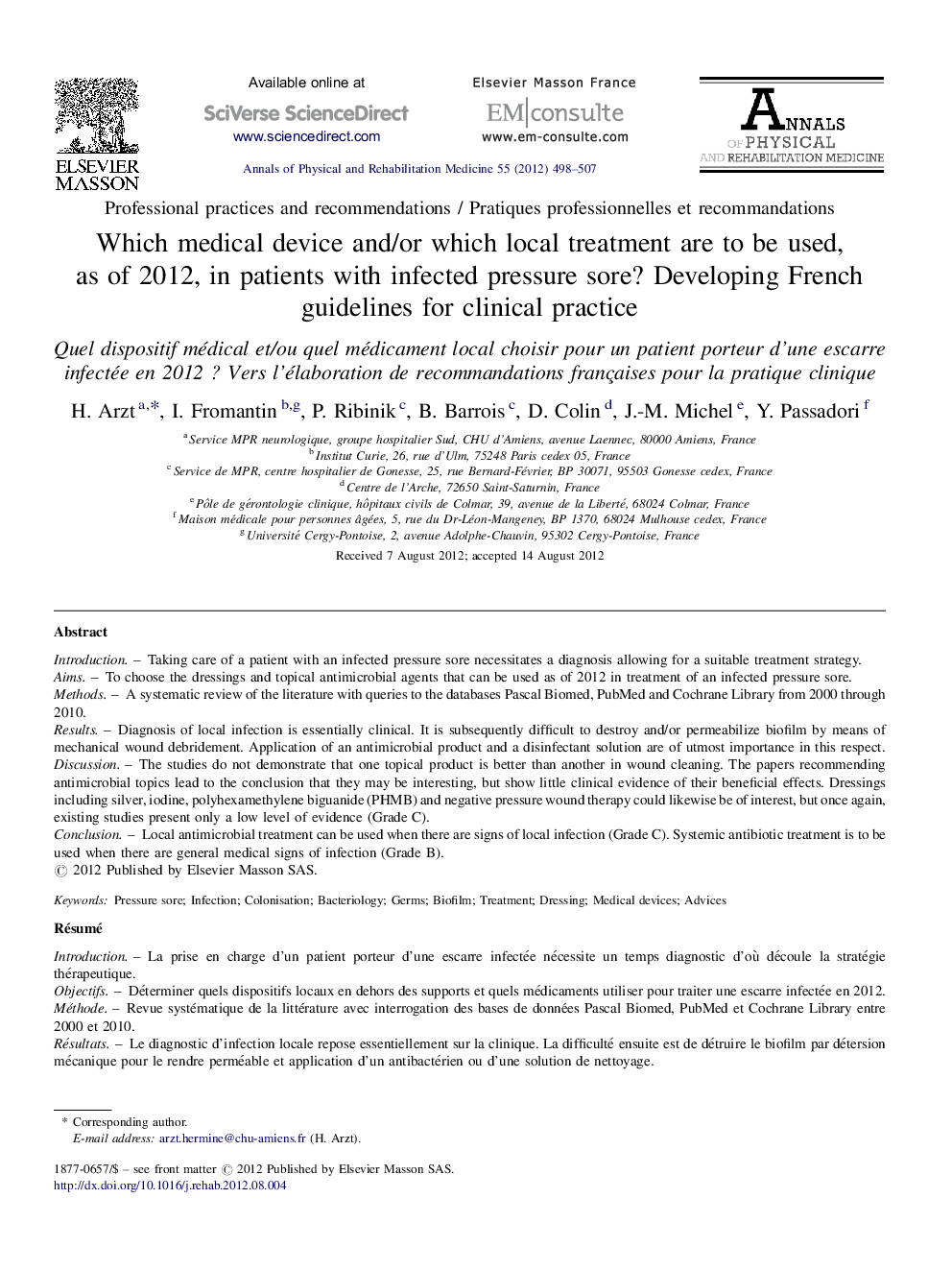| کد مقاله | کد نشریه | سال انتشار | مقاله انگلیسی | نسخه تمام متن |
|---|---|---|---|---|
| 4041056 | 1603324 | 2012 | 10 صفحه PDF | دانلود رایگان |

IntroductionTaking care of a patient with an infected pressure sore necessitates a diagnosis allowing for a suitable treatment strategy.AimsTo choose the dressings and topical antimicrobial agents that can be used as of 2012 in treatment of an infected pressure sore.MethodsA systematic review of the literature with queries to the databases Pascal Biomed, PubMed and Cochrane Library from 2000 through 2010.ResultsDiagnosis of local infection is essentially clinical. It is subsequently difficult to destroy and/or permeabilize biofilm by means of mechanical wound debridement. Application of an antimicrobial product and a disinfectant solution are of utmost importance in this respect.DiscussionThe studies do not demonstrate that one topical product is better than another in wound cleaning. The papers recommending antimicrobial topics lead to the conclusion that they may be interesting, but show little clinical evidence of their beneficial effects. Dressings including silver, iodine, polyhexamethylene biguanide (PHMB) and negative pressure wound therapy could likewise be of interest, but once again, existing studies present only a low level of evidence (Grade C).ConclusionLocal antimicrobial treatment can be used when there are signs of local infection (Grade C). Systemic antibiotic treatment is to be used when there are general medical signs of infection (Grade B).
RésuméIntroductionLa prise en charge d’un patient porteur d’une escarre infectée nécessite un temps diagnostic d’où découle la stratégie thérapeutique.ObjectifsDéterminer quels dispositifs locaux en dehors des supports et quels médicaments utiliser pour traiter une escarre infectée en 2012.MéthodeRevue systématique de la littérature avec interrogation des bases de données Pascal Biomed, PubMed et Cochrane Library entre 2000 et 2010.RésultatsLe diagnostic d’infection locale repose essentiellement sur la clinique. La difficulté ensuite est de détruire le biofilm par détersion mécanique pour le rendre perméable et application d’un antibactérien ou d’une solution de nettoyage.DiscussionLes études ne montrent pas de supériorité d’un produit par rapport à un autre pour le nettoyage. L’ensemble des travaux concernant l’application d’antimicrobiens locaux réalisés, permettent de conclure à un intérêt mais sans réelles preuves cliniques d’efficacité. Les pansements à l’argent, les dérivés iodés et la TPN auraient un intérêt mais là encore les études sont d’un faible niveau de preuve (Grade C).ConclusionLe traitement local antibactérien peut être envisagé en présence de signes locaux d’infection (Grade C). Le traitement systémique antibiotique est mis en place en présence de signes généraux d’infection (Grade B).
Journal: Annals of Physical and Rehabilitation Medicine - Volume 55, Issue 7, October 2012, Pages 498–507